Turkey-Vegetable Quinoa Pilaf
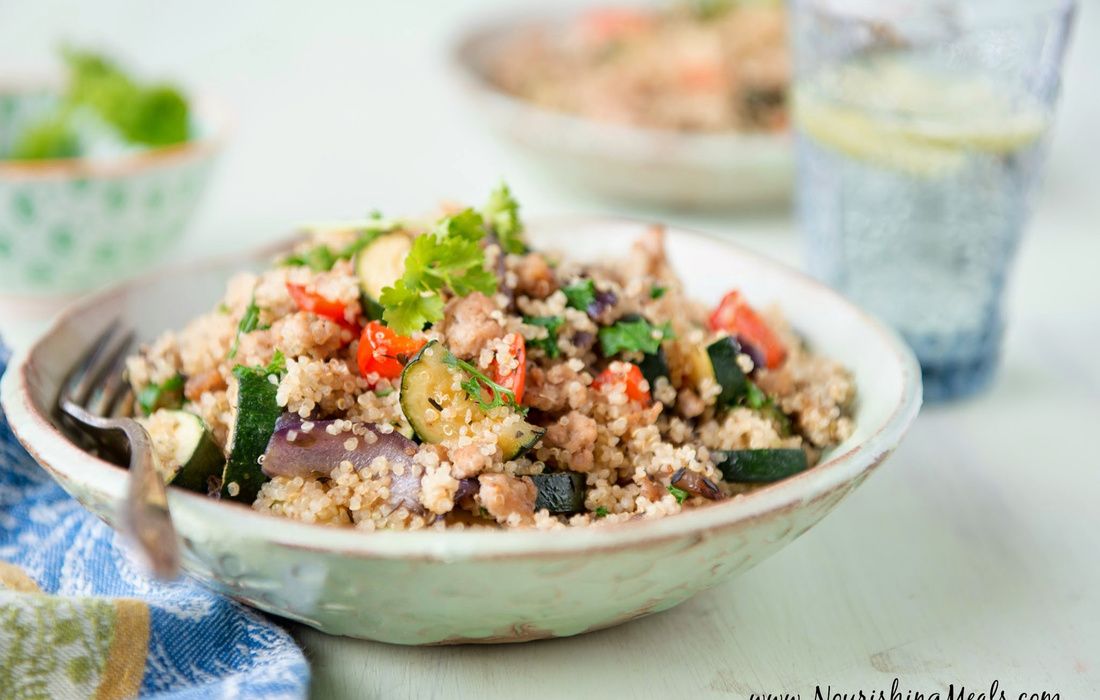
Make this simple, nourishing quinoa recipe for dinner when you are pinched for time and need to use up the vegetables in your fridge! It's best to use leftover, or completely cooled, cooked quinoa when making pilafs or stir-frys. This way it doesn't clump up during the sautéing process. Use whatever veggies and fresh herbs you have on hand. For example, I've used carrots, asparagus, and cauliflower before. Snipped fresh chives and dill are excellent additions as well. If you don't have ground turkey, don't add it. Leftover cooked chicken or beans can work here too.
This recipe is suitable for phase 3 of our Elimination Diet, or omit the red bell peppers (nightshades) and use it during phase 2. If you are following one of the stricter variations for severe gut disorders, then omit the quinoa and serve the turkey-veggie part over cooked spaghetti or kabocha squash.
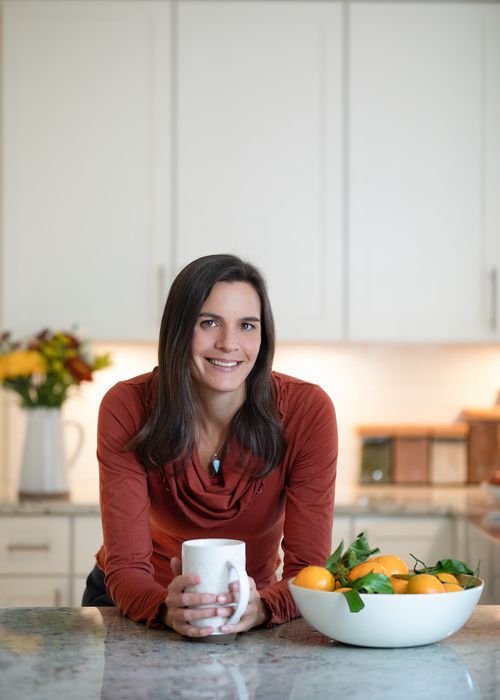
About the Author
Alissa Segersten, MS, CN
Alissa Segersten, MS, CN, is the founder of Nourishing Meals®, an online meal-planning membership with over 1,800 nourishing recipes and tools to support dietary change and better health. As a functional nutritionist, professional recipe developer, and author of The Whole Life Nutrition Cookbook, Nourishing Meals, and co-author of The Elimination Diet, she helps people overcome health challenges through food. A mother of five, Alissa understands the importance of creating nutrient-dense meals for the whole family. Rooted in science and deep nourishment, her work makes healthy eating accessible, empowering thousands to transform their well-being through food.Nourishing Meals Newsletter
Email updates.
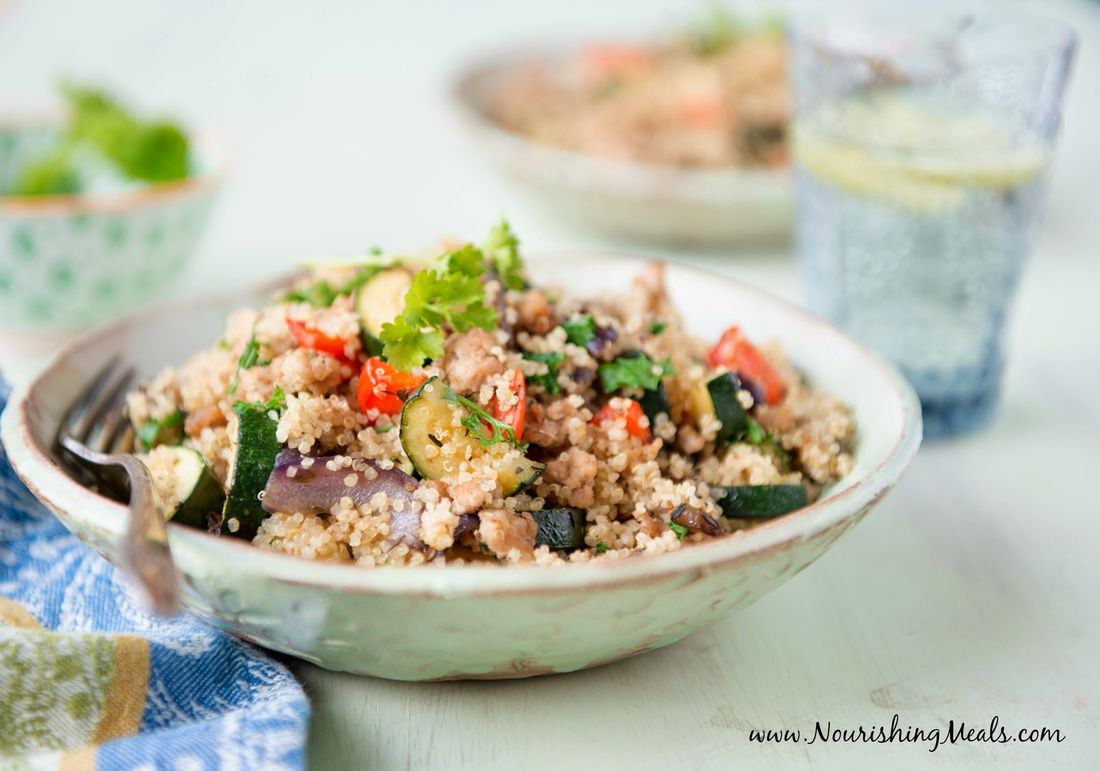

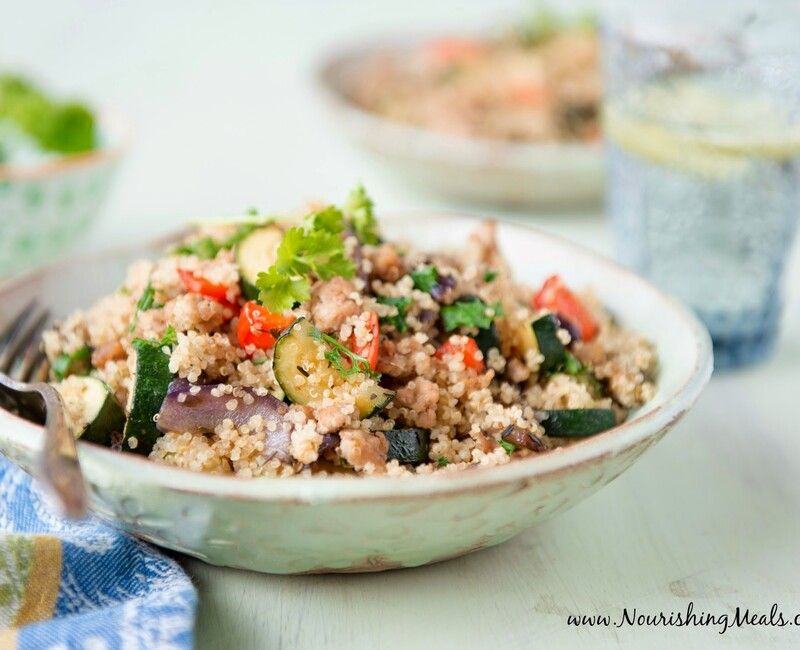



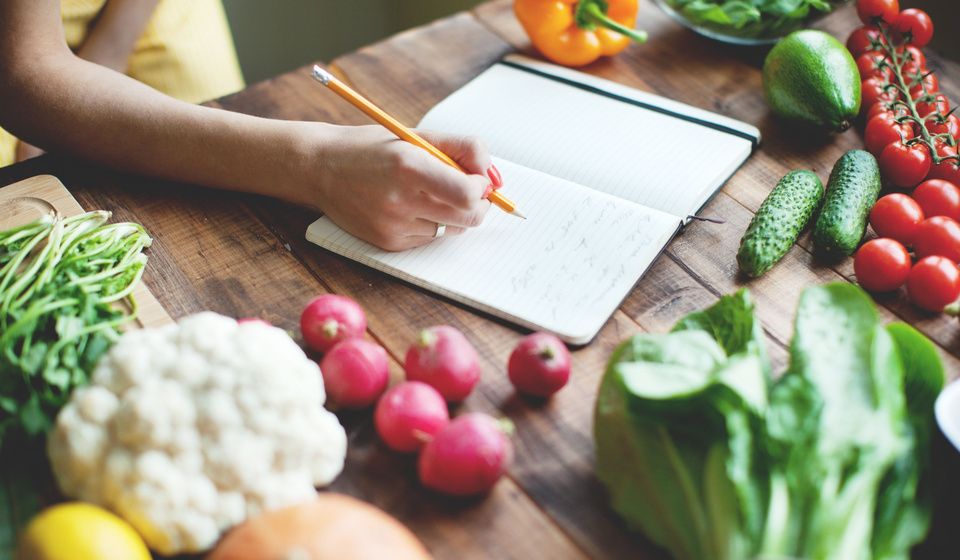
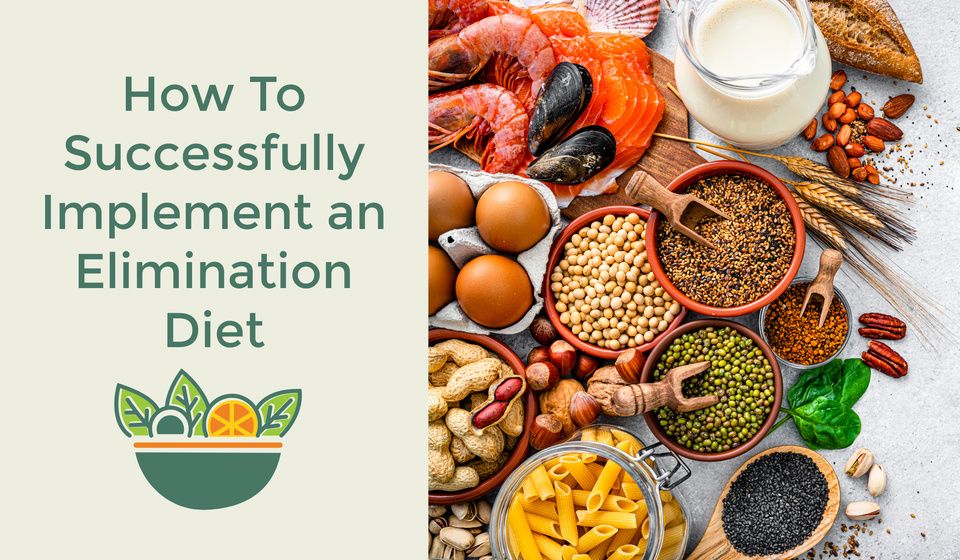

Add Comment
Comments
I know you commented 5 years ago so you may have found a good source on soaking grains etc. The soirce i found says to soak quinoa for 2 hours, or if you want to sprout them then soak for 1-2 days. You do need to rinse every so often when sprouting in order to prevent it from growing things you dont want and goong bad.
Hi,
Thanks for the great recipes and cookbooks Ali! I have both the first two books and we use them a lot!
I have a few questions I'm hoping you would be so kind to help me out with please?
1. Is the new ' Whole Life Nutrition' cookbook available as an ebook?
2. I've been reading up a lot of different information on phytic acid in grains. I have since started soaking all my grains including rice, but I don't know if I'm doing it correctly. I live in Dubai so it's extremely hot at the moment and soaking quinoa for 36 hours on the counter has it smelly and foamy. I have not been able to find proper instructions anywhere on how to soak grains to reduce phytic acid. I would really appreciate some soaking instructions etc for different grains and different temperatures.
3. I can't find psyllium husks here, just the powdered psyllium husks and you state they are not interchangeable. If I were to use the powdered psyllium how should I sub it in the recipe?
4. What can be substituted for the psyllium and flax for those who are allergic to both? I don't use gums either as my family gets sick consuming them.....
Thanks once again!
Saleha
Looks great! I like making meals like this to take to work for the week - Sunday is my cooking day for the week! I will have my Quinoa porridge for breakfast and quinoa for lunch!